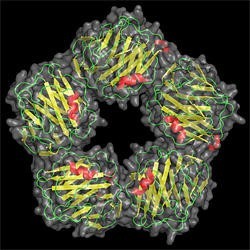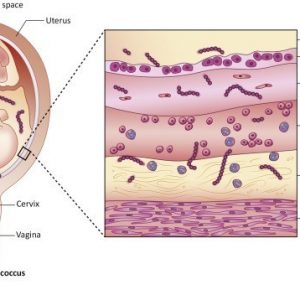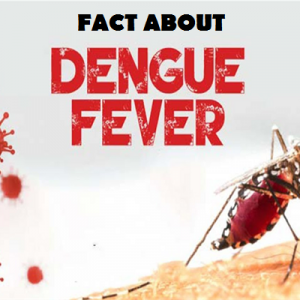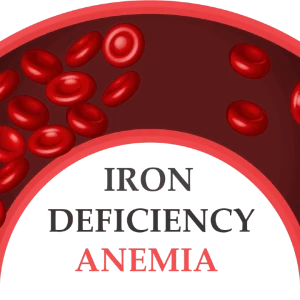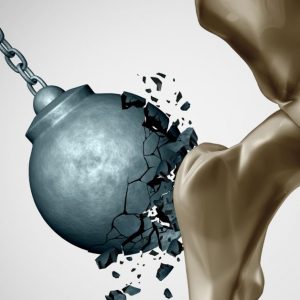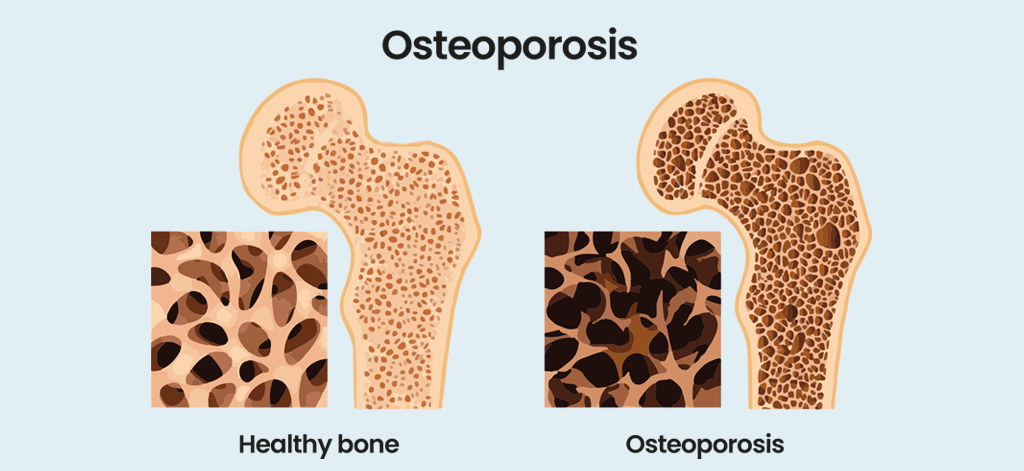
Osteoporosis happens when bone thickness diminishes and the body quits producing as much bone as it did previously. It can influence both, males and females, however, it is usually bound to happen to ladies after menopause, on account of the sudden decrease in estrogen, the hormone that regularly protects against osteoporosis. As the bones end up being.
Weaker, there is a higher danger of a fracture after a fall or even genuinely minor trauma.
It affects the structure and quality of bones and makes fractures more probable to occur, particularly in the spine, hip, and wrists. As mentioned earlier, It is most common among females after menopause, yet smoking and an unhealthy lifestyle increase the hazard.
What exactly is osteoporosis?
Osteoporosis includes a constant weakness of the bones. It actually signifies “porous bones.” The bones wind up weaker, expanding the danger of breaks, particularly in the hip, spinal vertebrae, and wrist.
Bone thickness tops when a man is in their late 20s. After the time of around 35 years, the bone begins to end up weaker. As we age, the bone breakdown is quicker than its newborn formation, this process results in osteoporosis.
Causes and hazard factors
Various hazard factors for osteoporosis have been recognized, some of which are modifiable.
Unavoidable elements –
Non-modifiable hazard factors include:
- Age: The risk of osteoporosis increases after the mid-30s, particularly after menopause.
- Decreased sex hormones: Lower estrogen levels seem to make it difficult for the newborn formation
- Bone structure: Being tall (more than 5 feet 7 inches) or thin (weighing under 125 pounds) increases the risk.
- Hereditary components: Having a nearby relative with a case of hip break or osteoporosis makes osteoporosis more common.
- Fracture history: Someone who has recently had a fracture, particularly after the age of 50 years, is more likely to have osteoporosis.
Osteoporosis
-Modifiable hazard factors include:
- dietary disorders, for example, anorexia or bulimia nervosa, or orthorexia
- tobacco smoking
- increased liquor consumption
- low levels of calcium, magnesium, and vitamin D, due to malabsorption issues, or due to some medicines
- Inactivity or decreased activity can increase the risk of osteoporosis
- Weight-bearing activity counteracts osteoporosis.
Lifestyle factors for avoiding osteoporosis
Different approaches to limit the hazard are:
- not smoking, as this can lessen the development of new bone and decreases estrogen levels in ladies
- restricting liquor, to encourage healthy bones and avert falls
- getting normal weight-bearing activity, for example, strolling, as this advances healthy bone and fortifies muscles
- doing activities to advance adaptability and parity, for example, yoga, as these can diminish the danger of falls and fractures
- For individuals who as of now have osteoporosis – nutrition, exercise, and fall counteractive action assume a key job in lessening dangers and bone loss.
Treatment of osteoporosis
Osteoporosis medications work in various ways. A man with more serious bone loss or various broken bones might be recommended different medication in comparison to a man with less bone loss or no cracks. For the most part, the treatment aims to:
- Slow the development of osteoporosis
- keep up sound bone mineral density and bone mass
- avert fractures
- diminish pain
- augment the individual’s capacity to proceed with their routine
This is done through preventive way of life measures and the utilization of supplements and a few medications.
Bone loss that prompts osteoporosis grows gradually. There are regularly no side effects or outward signs, and a man may not realize they have it until the point that they encounter a fracture/break after a minor accident, for example, a fall, or even a hack or sniffle.
Ordinarily affected zones are the hip, wrist, or spinal cord.
If you need more in-depth knowledge on Osteoporosis and its treatment, then having a health analysis done by doctors at Lifeline Laboratory is highly recommended, especially for those approaching old age. Our health experts have years of expertise in treating diseases, finding their root causes, and helping our patients lead a healthy life. For those, who put health on top of their priority list, please make sure to get in touch with us for all sorts of health checkups. We help you lead a life, which is healthy and lived to the fullest.

